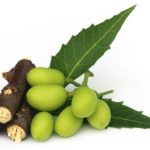Cottonseed oil is a vegetable oil extracted from the seeds of cotton plants, primarily from the species Gossypium hirsutum and Gossypium herbaceum. It is a byproduct of cotton production, as the fibers are used in textiles while the seeds are processed for oil extraction.
Characteristics of Cottonseed Oil
- Color and Flavor: Refined cottonseed oil is clear with a light golden color and has a mild flavor, making it suitable for cooking and frying.
- Composition: It contains a mixture of saturated and unsaturated fatty acids. The primary fatty acids are linoleic acid (polyunsaturated), oleic acid (monounsaturated), and palmitic acid (saturated).
- Stability: Cottonseed oil is relatively stable due to its balance of different types of fatty acids, which makes it resistant to oxidation and rancidity.
- Nutritional Value: It is a good source of vitamin E (tocopherols), which acts as an antioxidant.
How is Cottonseed Oil Extracted?
The extraction of cottonseed oil involves several steps to ensure the oil is suitable for consumption. The process includes:
- Cleaning: Cottonseeds are cleaned to remove debris, dirt, and other impurities.
- Decortication: The seeds are dehulled to separate the cottonseed kernels from the hulls. This process involves breaking the seeds and removing the outer covering.
- Flaking: The kernels are then flaked to break them into smaller pieces, which increases the surface area for oil extraction.
- Cooking: The flakes are cooked to enhance the oil extraction process. This step involves heating the flakes to facilitate the release of oil.
- Pressing/Mechanical Extraction:
- Expeller Pressing: The cooked flakes are mechanically pressed using an expeller press to extract the oil. This method involves using high pressure to squeeze the oil out of the flakes.
- Cold Pressing: In some cases, a cold pressing method is used, which involves pressing the seeds without applying heat. This method yields less oil but preserves more of the oil’s natural nutrients and flavor.
- Solvent Extraction: To maximize oil recovery, the pressed cake (residual material from expeller pressing) is often subjected to solvent extraction. A solvent, typically hexane, is used to dissolve the remaining oil from the pressed cake. The solvent is then evaporated to separate it from the oil.
- Refining:
- Degumming: Removes phospholipids and other impurities.
- Neutralization: Removes free fatty acids by treating the oil with an alkali.
- Bleaching: Removes color pigments and other impurities using bleaching earth or activated carbon.
- Deodorization: Eliminates odors and volatile compounds by heating the oil under a vacuum.
- Winterization (Optional): In some cases, the oil undergoes winterization to remove waxes and other substances that can cloud the oil at low temperatures.
Uses of Cottonseed Oil
- Cooking and Frying: Due to its mild flavor and stability, it is commonly used for frying and baking.
- Salad Dressings and Margarine: It is often used in the production of salad dressings, mayonnaise, and margarine.
- Processed Foods: Commonly found in snack foods, baked goods, and other processed foods due to its stability and neutral taste.
- Industrial Uses: Besides food applications, cottonseed oil is also used in the manufacture of soaps, cosmetics, and detergents.
Cottonseed oil is a versatile and widely used vegetable oil, valued for its neutral taste, stability, and suitability for various culinary and industrial applications.
Visited 120 times, 1 visit(s) today

Leave a Reply